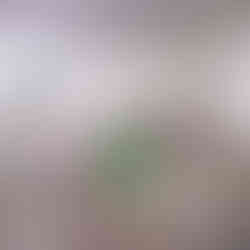Lipschutz or Lipschutz at MaRS
- artandcakela
- Jul 16, 2017
- 4 min read

Jeff Lipschutz and Michael Lipschutz. Museum as Retail Space. Photo Courtesy of MaRS. Photo Credit Tomo Muscionico.
Lipschutz or Lipschutz at MaRS
By Genie Davis
Through July 22nd
Through July 22nd at Museum as Retail Space the father and son duo of Jeff Lipschutz and Michael Lipschutz exhibit the eponymous Lipschutz or Lipschutz. A collection of 15 large paintings and 25 sculptures, the installation is about two generations exploring the new Ameriacn landscape.
Although the pieces are individual, the exhibition feels – as do many of the exhibitions at MaRS – more like an installation. Walking through the gallery space, the pieces play off each other, unfolding in a kind of artistic and cultural map.
Both political and emotional, the artists’ works represent a wide swath of American culture, ranging from the 50s to the contemporary scene. The duo are exploring personal points of view, literary references, social and political “postterritory” according to the exhibition notes.
On both canvases and in sculptural form, the works allude to the ideas of resistance to our current cultural politics, as well as inviting viewers to look at both literal geography and the more complex geography of society, and emotional states.

Jeff Lipschutz and Michael Lipschutz. Museum as Retail Space. Photo Courtesy of MaRS. Photo Credit Tomo Muscionico.
One sculptural piece features a burnt folding chair next to a “table” created of a blue and white sign indicating a telephone booth – an anachronism today – mounted on a wooden dowel. The sculpture “Grail” also uses wood, metal, and here a cement bloc. Fused to the central wooden stake are two pieces of driftwood, creating the look of a kind of religious icon, if an icon were made from detritus. “Data Plan” has a similar feel, with a phone book fanned out like a kind of flower. Here we are to some extent worshipping the obsolete, making the once mundane and now abandoned into something of meaning.
Phone books themselves are used as a sculptural medium for Lipshutz and Lipshutz. They form a burnt orange colored house in “First and Second Story,” and totem poles of sorts, inscriped “1950” and “1986.”
Color palettes move from vivid bursts of color – such as the bright blue of “Post” to earth tones. The iconic and now archaic phone booth signs figure, like the phone books, many times in the exhibition, which is quite literal proof that another person’s – or society’s – trash can be an artistic treasure. The father and son collaboration is a kind of familial cross of found art and assemblage. The duo find their materials scavenging through trash and unwonted household. To the viewer the message seems to be that if trash can be used to create art, what about the detritus of our emotional and political culture – can it, too, be art, or instrumental in the process of shaping it? Can we recycle our past and make it more interesting, better, or at least post a tribute to it rather than discarding it?
The focus on landscape is both a physical one and an emotional destination. Sculptures reference and utilize stacked objects that are used and discarded; a kind of ritual tribute to both waste and collection, excess and loss. These are relics of a lost era, or an era perhaps in which others are lost or losing their way – emblematic of this era, this time and place.

Jeff Lipschutz and Michael Lipschutz. Museum as Retail Space. Photo Courtesy of MaRS. Photo Credit Tomo Muscionico.
Paintings are delicate, even whimsical if the subjects depicted are dark. Take “Blind Man’s Bluff” with its abandoned, trash filled pool; or take “Ghost Town,” in which a view of an abandoned town is visible through an open window, above which a woman’s leg is poised on a ladder. Graffiti, carefully composed, fill the dark walls surrounding the wasteland view. Here are civilizations perhaps post-man entirely, deconstruction, and the history left behind until time erases that, too. Many of the images appear inspired by the ghost town of Eagle Mountain, where the elder Lipshulz grew up. Other works feature screenshots of television programming menus. It too is an elegy – to both the cavalier dependence on technology we exhibit and to life without technology, to a life in which there was more meaning to be found than in changing channels. This is both a warning and an elegy.
The Los Angeles-based father/son team has been working together since 2010, and presents here a kind of poetry and passion; a post-machine industrialism, and a laered look at who we are, where we came from, and the possible future that exists right now. In the end though, the exhibition leaves viewers with the aching belief in the potential for something purer and quieter.
#losangeles #california #losangelesartist #art #painting #collaboration #onlineartmagazine #losangelesart #contemporaryart #southerncalifornia #LosAngelesArtists #LipschutzorLipschutz #multimedia #artgallery #social #JeffLipschutz #gallery #mars #multimediaartist #artandcake #political #artexhibition #contemporarysculpture #ArtandCakeLA #fineart #MichaelLipschutz #artist #losangleesartgallery #mixedmedia #arts #artreview #sculpture #artexhibit #artmagazine #contemporarypainting #ArtandCulture #exhibition #MuseumasRetailSpace #collaborative #exhibit #losangelesgallery


















